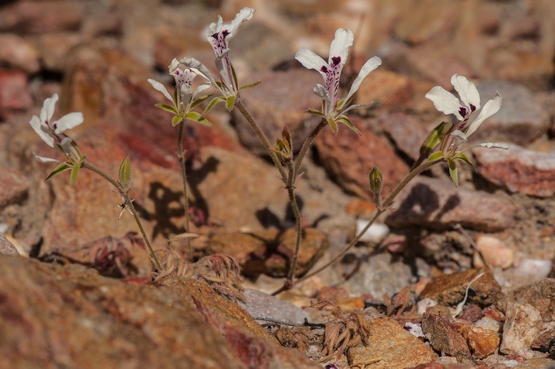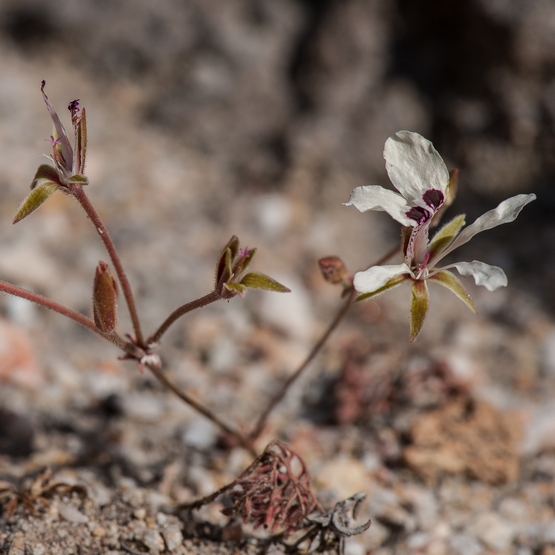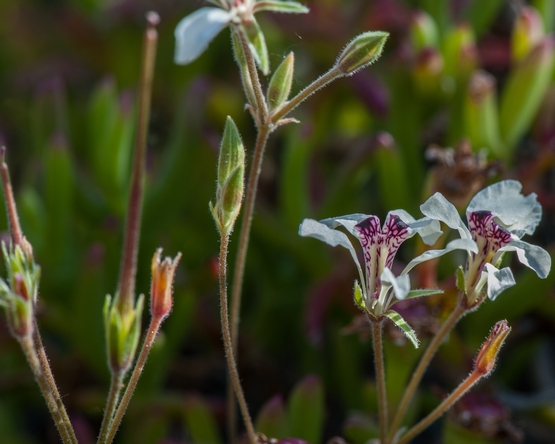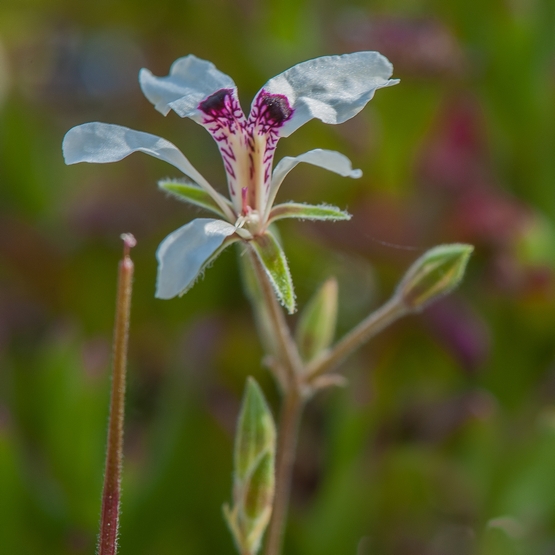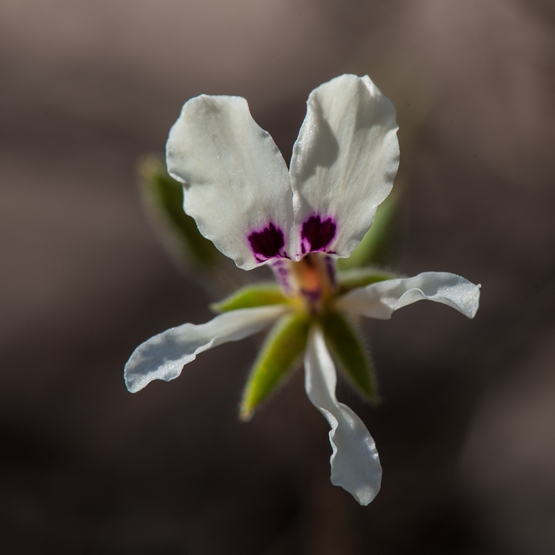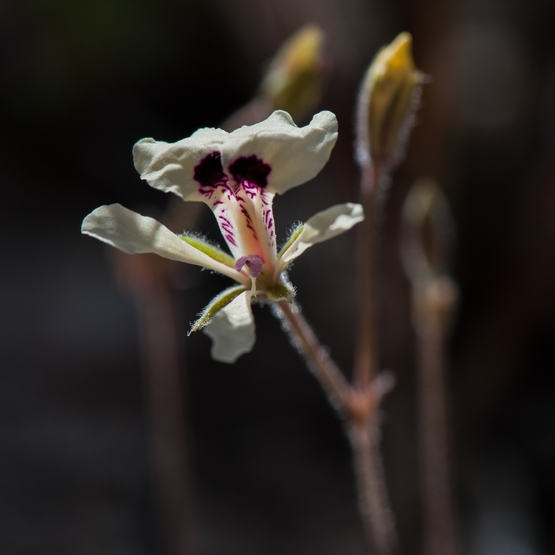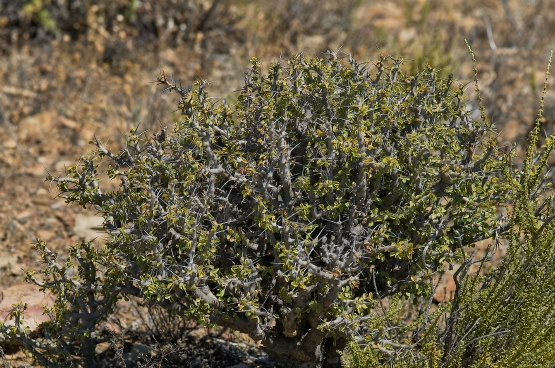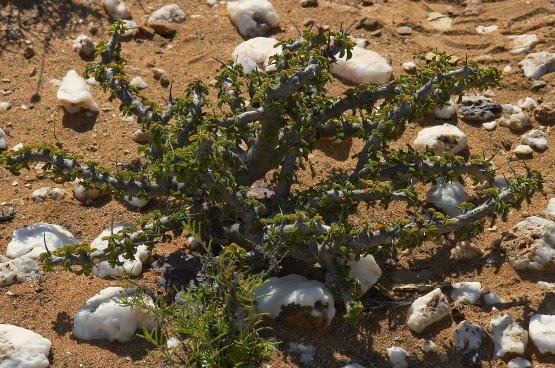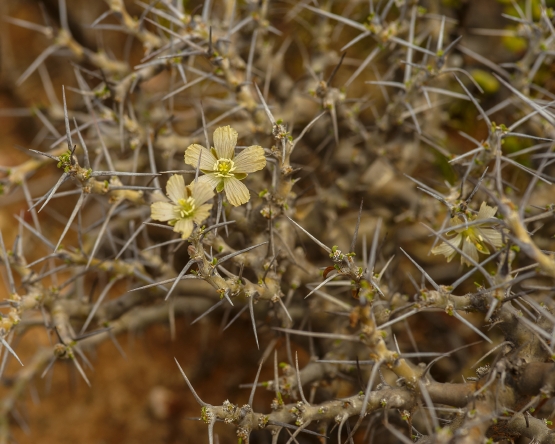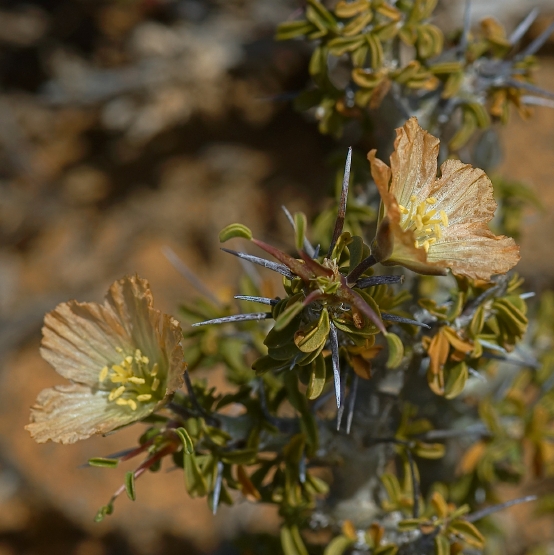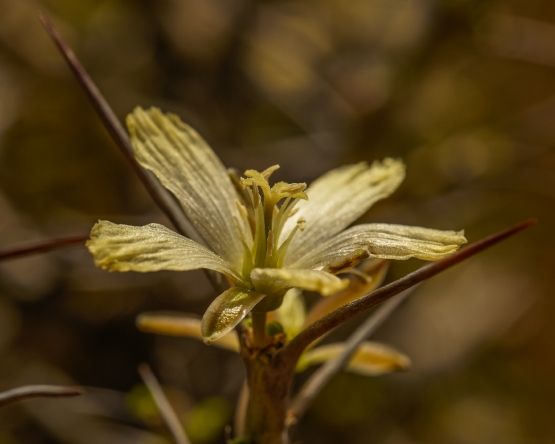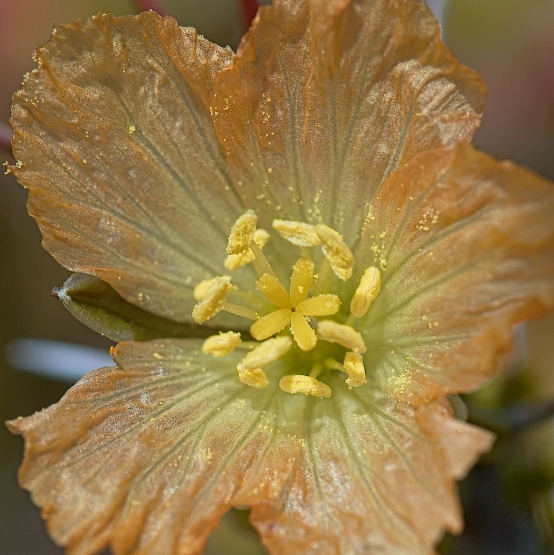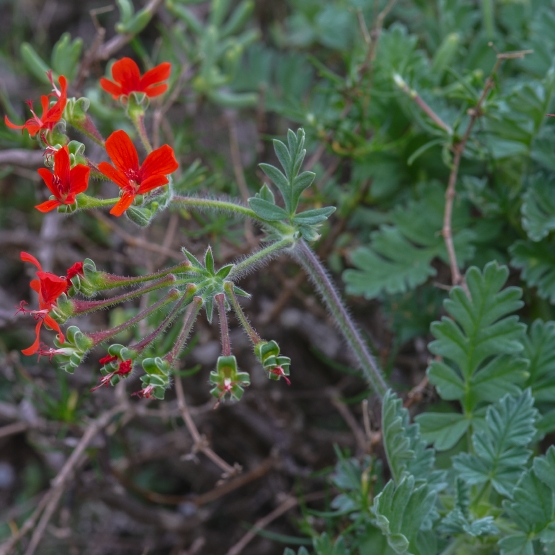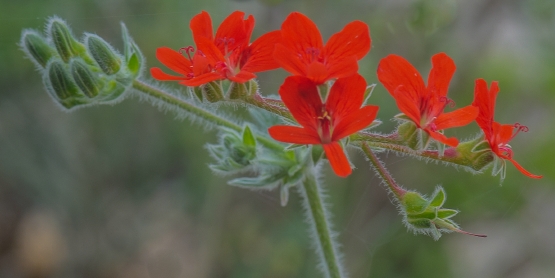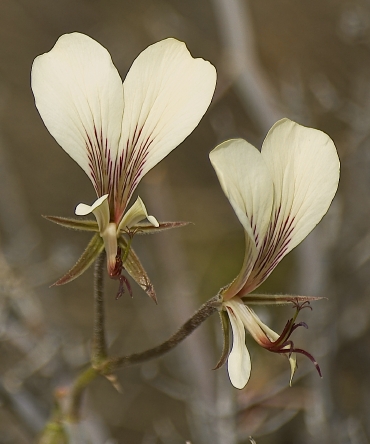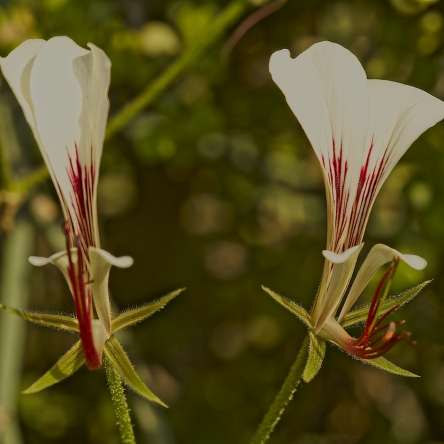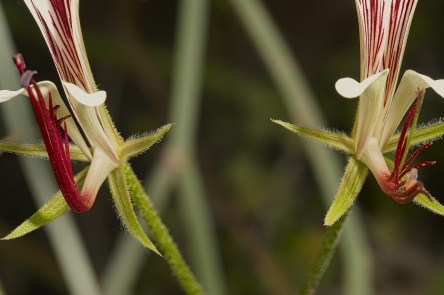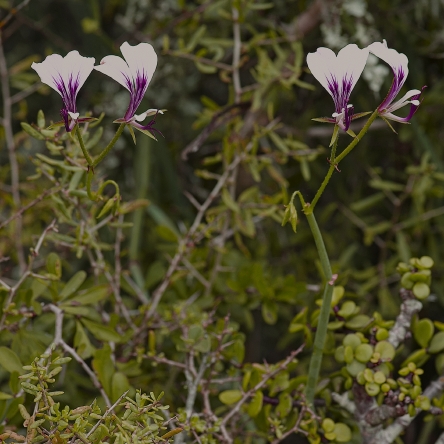Many of the more interesting Pelargoniums are geophytes*. The fact that they are hidden part of the year somehow adds to their appeal. The species shown here is very variable as to the shape and size of its leaves, which can be undivided or finely dissected and smooth or hairy. The beautiful flowers may be white, pale yellow or pink and appear from October to December.
The photos were taken last Saturday directly behind my house, where the plants grow in open or lightly vegetated sandy patches as well as on rocky outcrops. Actually the first ones I noticed were growing in an open Eucalytus coppice there.
* Plants which store water and/or food in underground storage organs and die down each year, regenerating at the start of the new growing season from buds that are hidden below soil-level.
